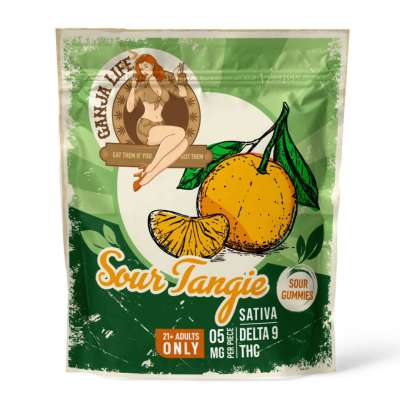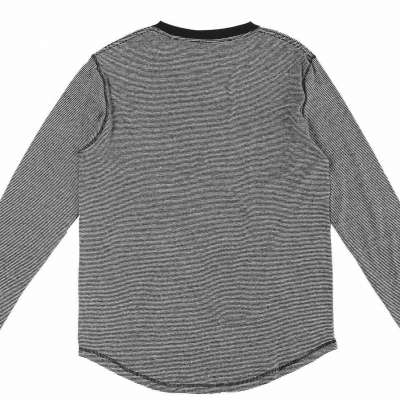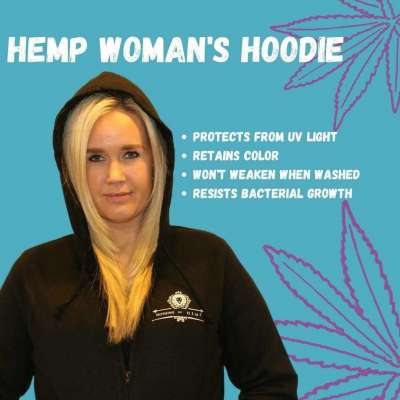
www.optimistdaily.com
Podcast Transcript April 18, 2025: From oysters to ice baths: what boosts your health and helps the planet
Episode Description:
In this week’s episode, Arielle and Karissa dive into two feel-good stories they didn’t expect to love: the science-backed benefits of shellfish and the surprising cellular perks of cold water immersion. From bivalves that clean oceans to ice baths that boost autophagy, discover why discomfort might just be good for you—and the Earth. Plus, a rapid roundup of other top solutions this week, including citizen science, coffee hacks, and maternal health progress in Alabama.
The Optimist Daily is a project of the World Business Academy.
Donate link: https://www.optimistdaily.com/donate-to-support-the-optimist-daily/?gift=Y%20http://
Transcript:
Theme music
Karissa:
Hello and welcome to The Optimist Daily’s Weekly Round-up. I’m Karissa.
Arielle:
And I’m Arielle, and we’re working hard to put solutions in view and optimism in movement.
Karissa:
Well, hello again! We’re back to share the solutions from The Optimist Daily this week. How are you doing today, Arielle?
Arielle:
Well, I am pretty tired. I’m exhausted, actually.
Karissa:
I relate to that 100 percent—yeah.
Arielle:
I mean, I guess it’s Easter. Happy Easter, everyone…
Karissa:
Happy Easter!
Arielle:
…But I just don’t really feel very springy. I feel kind of worn down. I don’t know if it’s just a lot of crazy things happening in the world or—
Karissa:
Yeah.
Arielle:
—or I’m not sleeping enough. I don’t really know.
Karissa:
I totally feel that. That’s kind of our “I’m an optimist, but…” segment. I’m an optimist, but… I’m tired.
Arielle:
Yeah. Yeah, I’m an optimist, but I’m tired (laughs).
Karissa:
I think I can speak for the both of us.
Arielle:
I guess we’ll just have to find ways to refresh ourselves over the weekend and in the coming days.
Karissa:
Yeah, exactly. That being said, if you don’t mind, I’ll dive into my solution and share some optimism with something kind of fun.
Arielle:
Yeah, of course.
Karissa:
My solution is titled The benefits of shellfish: why clams, oysters, and scallops are great for you and the planet. And it’s actually very funny that I picked this solution because I don’t like shellfish.
Arielle:
Oh! (laughs)
Karissa:
I don’t eat it at all, but I have a lot of friends who really enjoy it. And I just think there’s kind of been a movement lately online—like a lot of oyster-themed products and oyster love things being shown, which is a shellfish. So yeah, I saw this solution and was like, let me just, I guess, dedicate this one to all my friends who really enjoy shellfish. And I guess, Arielle, I have a question for you—do you enjoy eating shellfish?
Arielle:
Yes, I really do. I love oysters, I love clams, I love scallops—I just love seafood in general. And I do feel, you know, a little bit guilty of course, because I know that there’s overfishing involved…
Karissa:
Yeah.
Arielle:
…But if you put a plate of oysters in front of me, then I’m going to gobble those up.
Karissa:
OK, good. So I actually went to a winery kind of recently in Paso Robles, in California. And my boyfriend was wearing an oyster shirt from Philadelphia, and two of the workers complimented him on the shirt—it said something kind of generic, like “I love oysters” or something. And they were like, “I love your shirt! I love oysters!”
Everyone loves oysters! And if you love seafood but you worry about—like you said, Arielle—concerns about overfishing, the environmental impact of your meal, or even mercury, there’s really good news with shellfish, especially bivalves like oysters, clams, and scallops. They are both a nutritional powerhouse and an environmental success story.
Arielle:
I’m intrigued.
Karissa:
So, whether you’re shopping at the fish counter or browsing a restaurant menu, these simple savory mollusks offer impressive health benefits and are one of the most sustainable seafood choices available today.
This is why. For one, shellfish are nutrient-dense and low in contaminants. When it comes to a healthy animal protein, few options are as nutrient-packed as bivalves. Christopher Golden, who is an expert in planetary health and aquatic foods at the Harvard T.H. Chan School of Public Health, places mussels at the very top of the list—which is wild! Golden says that a single serving holds all the vitamin B12 you need for a day.
Arielle:
Wow, that is pretty impressive.
Karissa:
And mussels also deliver a very healthy dose of omega-3 fatty acids, zinc, and iron, which are all critical nutrients for energy, immunity, and brain health. Oysters, clams, and scallops also make the list, but they’re just slightly behind mussels in overall nutrient density.
Arielle:
OK wow, this is incredible news for me because I… I love eating them! I know seafood can sometimes be criticized for its high levels of contaminants like mercury, and you kind of mentioned that this might not be too much of a worry. But how much do we really need to worry about that when it comes to shellfish?
Karissa:
Yeah, so bivalves are low in fat, high in protein, and unlike many other types of seafood, they’re generally free of worrisome contaminants like mercury. That’s because they’re filter feeders at the bottom of the food chain and tend to have short lifespans, so it reduces their risk of accumulating harmful substances.
That said, raw oysters can carry bacteria, and rare contamination events, such as algae blooms or sewage releases, can occur. But these are actually very closely monitored, at least in the U.S. And some bivalves might even expel harmful materials like microplastics instead of ingesting them. So it’s not as big of a worry as it is with other seafood products.
Arielle:
Hmm. So, how sustainable are shellfish? I know, in general, the seafood industry can often get a bad rep for being—well, not so sustainable—and for contributing to overfishing and habitat destruction.
Karissa:
As we kind of hinted earlier, bivalves shine in terms of environmental impact. And according to Dr. Golden, shellfish are the most sustainably produced type of seafood on a global scale. Around 90 percent of oysters, clams, and other bivalves sold today are farmed rather than wild-caught, which reduces reliance on more destructive fishing practices. So that’s really awesome.
And these filter-feeding mollusks require no fertilizers, pesticides, or supplemental feed, which is helpful for reducing pollution and habitat destruction. In fact, they actually improve the water they live in by filtering out excess nutrients and pollutants. Clams and oysters can even help reduce carbon in aquatic environments by pulling it from the water.
Arielle:
Yeah, it really sounds like these little creatures are doing a whole lot of good for the environment.
Karissa:
And it’s not just the shellfish doing good—their farmers are often strong advocates for clean water. Aquaculture expert with California Sea Grant, Luke Gardner, explains that you can’t farm in dirty water, so oyster farmers are environmentalists at heart—and for business. And I really love this reminder of sustainable farming practices, because it brings me back to how I kind of opened with this winery story about the vineyard. A lot of the workers there really enjoyed oysters, but they also let us know that the vineyard is Regenerative Organic Certified, which means they focus on soil health, farmworker fairness, and animal welfare.
So I thought—even though wineries and oysters are a little bit different—it was a cool intersection of something I learned recently.
Arielle:
Amazing. I love this solution. I love that it covers the intersection of healthy food and sustainability. Do you have any tips to share so our listeners can choose and enjoy responsibly sourced shellfish?
Karissa:
Yeah! So when buying bivalves, a few simple rules can ensure a good experience. Dr. Gardner recommends choosing U.S.-sourced shellfish, as domestic aquaculture follows strict safety regulations—if you’re in the U.S., of course. Fresh shellfish should be tightly closed before cooking. If they’re open, give them a tap, and if they don’t close, skip them.
And Dr. Gardner always says to use your nose—if it smells bad, don’t eat it. He says seafood should not smell bad.
Arielle:
A simple but effective tip.
Karissa:
Just a simple sniff test is good enough sometimes. But also, storage matters too. So, make sure your shellfish have been kept cold. And for those who need shelf-stable options, canned shellfish can be a very convenient choice. They might be slightly lower in some nutrients, but higher in others. The bigger concern is sourcing—it can be harder to trace the origin of canned products.
But at the end of the day, this article reminds us that nothing beats fresh, local seafood from areas with good water quality. And I guess I’m lucky to live in California, where we have a lot of coastline and a lot of shellfish to enjoy. So I really should embark on my shellfish-enjoying journey.
Arielle:
Yeah, you should! And there are so many ways to enjoy shellfish—it doesn’t always have to be slurping an oyster down, which I can understand is maybe visually a little bit weird for people.
Karissa:
I’ve… I’ve tried to work myself up to slurping an oyster down, but I just haven’t been able to do it yet. I’m not a huge seafood fan in general, but I’ve been trying. And this article reminds us that because bivalves are so nutrient-dense, you don’t need a lot to make a satisfying, healthy meal. Their rich, briny flavors also go a long way in classic dishes, like linguine with clam sauce or clam chowder, both of which work well with fresh or canned clams. So, something that’s not just directly eating the shellfish.
And scallops are another delicious option you can try. They have a slightly fattier, meatier content than other bivalves, but their flavor and texture are reminiscent of prawns. Dr. Golden suggests swapping them into shrimp recipes to mix things up.
I guess all in all, whether you’re a seafood lover or just starting to explore the raw bar like me, maybe shellfish are a smart, sustainable, and delicious choice for your plate and the planet. So I thought this was a very interesting story to share today.
Arielle:
I will not be so guilt-ridden while I’m… while I’m picking at some delicious seafood linguine, which I’m definitely in the mood for now. All right, well, thank you for sharing that. I’m going to quickly transition into my story, which doesn’t have to do with seafood, but it does have to do with water. So I guess that’s our little link today.
Karissa:
Mhm!
Arielle:
So, you know how people lately have been really into cold plunges, and like ice baths and cold showers and jumping into frigid lakes like it’s some kind of personal challenge?
Karissa:
Oh yeah, I’ve definitely seen that—the whole “embrace the discomfort” trend. My feed is really full of people pretending they love to be frozen.
Arielle:
Well, it turns out they might be onto something more than just the hype. A new study from the University of Ottawa—go Canada!—looked at what happens to your cells after just one week of cold water immersion, and the results are actually kind of incredible.
Karissa:
Ohh, OK—I’m intrigued now. But how cold are we talking here?
Arielle:
We’re talking 14°C, which is about 57°F. Not ice bath levels, but definitely uncomfortable. And I… I wouldn’t willingly jump into something that cold. I’m definitely more of a tropical water type of girl.
By the way, if you want to take a look at the article yourself, it’s titled Just one week of cold water swimming may strengthen your cells, study shows.
Anyway, researchers had 10 healthy young men immerse themselves in that water for an hour a day, every day, for a week.
Karissa:
So they didn’t immediately hop back out, shrieking because it was so cold?
Arielle:
No, apparently not—I mean, I definitely would have! But here’s what’s fascinating: the cold exposure triggered measurable changes at the cellular level. Specifically, it improved something called autophagy.
Karissa:
Autophagy? What is that?
Arielle:
Autophagy is your body’s self-cleaning mechanism. It clears out damaged cellular parts and recycles them, which helps your cells function more efficiently. It’s a huge part of how we maintain cellular health and resilience, and it’s been linked to aging, disease resistance— even longevity.
Karissa:
OK, so by just practicing sitting in cold water for a week, their cells got better at cleaning themselves?
Arielle:
Yes—and they did this pretty quickly. The lead physiologist on the study, Glen Kenny, said that cold exposure significantly improved autophagic function. But that’s not all it affected. Early in the week, the participants showed spikes in apoptosis, which is basically programmed cell death, and inflammation markers also went up.
Karissa:
Oh, well… that kind of sounds bad.
Arielle:
Yeah, it’s actually a typical stress response. The body detects a threat, like cold, and initiates emergency responses. But here’s the thing: by the end of the week, those markers dropped. The body adapted. Autophagy improved. Inflammation decreased. And the stress response became more efficient.
Karissa:
Ohh, OK—that makes sense. It seems like their cells kind of learned to chill out. It kind of reminds me of the whole process of building muscle. You’re kind of tearing and rebuilding tissue.
Arielle:
Yeah, that’s a good analogy. Kelli King, another researcher on the study, said they saw a clear improvement in the participants’ cellular cold tolerance. The adaptation was fast, and that’s what makes this study so compelling.
Karissa:
Well, OK, this was kind of a small group, though, right?
Arielle:
Yeah, just 10 young men. So that’s an important limitation to mention. We don’t yet know how these results might apply to older adults, for example, or women, or people with different health conditions. And it was done in a very controlled lab environment—so no ocean waves, no wind, no fish brushing against your leg.
Karissa:
Yeah. Well, OK—that’s still pretty amazing though, for just seven days, right?
Arielle:
Right. It’s part of this growing interest in hormesis, the idea that short-term, manageable stressors can actually make us stronger. Cold exposure is one of those stressors, and this study suggests it might be fine-tuning the way our cells handle stress and repair themselves.
Karissa:
So it seems like you’re saying those people jumping into cold lakes at sunrise might actually be on to something.
Arielle:
Yes, they might be—especially if it’s done safely and consistently. And when we’re talking about enhanced autophagy, we’re not just talking about performance or energy—we’re talking about real implications for aging, disease prevention, and healthspan: the number of years you live in good health.
Karissa:
Yeah. One week of cold dips could actually give your cells a pretty good tune-up.
Arielle:
That’s what the study suggests! It’s early days, and we need more research. But it’s another point in favor of the idea that our bodies are capable of remarkable adaptation, with the right kind of stress.
Karissa:
Well, I’m kind of inspired to try this out too. But I think I’m going to take baby steps—maybe just take a cold shower or something before plunging in.
Arielle:
Yeah, that’s a great place to start.
Karissa:
Well, that’s awesome. I hope everybody maybe can jump into some cold water this weekend.
Arielle:
All right. Well, it was really fun sharing solutions that… we actually aren’t too fond of! You don’t really like shellfish. I don’t like jumping into cold water. But hey—we learned something new.
Karissa:
Yeah, that’s so true. We did learn something new—and something that maybe we’ll try. This could either inspire you or reaffirm your love for these behaviors! And I’m pretty optimistic about some of the other solutions we featured on The Optimist Daily this week, too.
Arielle:
Yes! They include: Alabama takes step toward better maternal health with new Medicaid access bill; How to stay safe during extreme rainfall and flooding: expert tips to prepare and protect; Citizen scientists map space from their backyards with this global telescope network; and Splitting seawater could revolutionize cement into a carbon-negative material.
Karissa:
We also have: At 100 years old, this Galapagos tortoise just became a mom—and a conservation hero—that’s super interesting; Dublin expands car-free zones to improve bus travel and city life; Science-backed trick to make your pour-over coffee stronger, no extra beans needed; and Spring’s morning symphony: the mystery and beauty of the dawn chorus. Very cool solutions this week.
Arielle:
If you want to start your day off right, make sure to subscribe to our free daily newsletter to get our solutions straight to your inbox.
Karissa:
Yeah! And we also have more on our social channels. You can find us at @OptimistDaily on all platforms—including Threads, Pinterest, and Sky. The only difference is on X, where we are @OdeToOptimism.
Arielle:
We’re a small team of optimists working hard to bring you positive news. If you want to support our mission of putting optimism into the world, click the link in the show notes to find out how.
Karissa:
And support doesn’t always have to be financial—even just recommending our podcast to a friend, leaving a positive review on Apple or Spotify, forwarding a link, or sharing a solution on your socials can be a great help.
Arielle:
We didn’t mention it at the top, but we won’t be back next week—we’ll be back in two weeks.
Karissa:
Yeah, we’re taking a little spring break. But we’ll be back next time with more solutions.
Both:
Bye!The post Podcast Transcript April 18, 2025: From oysters to ice baths: what boosts your health and helps the planet first appeared on The Optimist Daily: Making Solutions the News.














